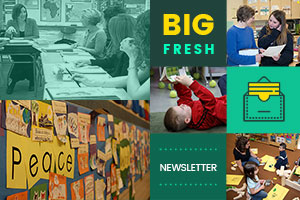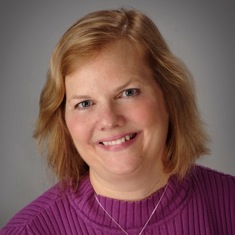At its best, schooling can be about how to make a life, which is quite different from how to make a living.
Neil Postman
My son’s Go Kit was on sale in our staff lounge. He along with some other students attended a young entrepreneur boot camp. Their goal was to develop a product with a given amount of funds and successfully sell it. Their concept was designed for people on the move who might forget the small essentials, such as educators. Knowing how long his Go Kits had been sitting in the lounge, I suspected that his team might not reach their sales goal.
So, I did what any parent would do and bought one for myself. Well, not for myself; for him. I put my check in the envelope and took my Go Kit to my office. Here was the inventory that I dumped out of the shoebox package and spread out on my table:
- nail clippers
- packet of Tylenol
- lip balm
- breath mints
- small pack of Kleenex
- cheap sunglasses
- small packet of sunscreen
I gathered these items and put them into a pocket in my backpack, quickly forgetting they were there.
Now I am at a state reading conference. I am living out of a suitcase and my backpack. And I cannot tell you how happy I am to have the contents of my son’s Go Kit here in my hotel room. Next are two brief examples to illustrate:
- I had purchased a set of new clothes on the ride to the conference. Hanging them up later in the hotel room, I couldn’t get the thin plastic ring that held the price tag off without tearing the belt loop in which it was attached. My new nail clippers served as the perfect tool for this problem.
- It’s been bitterly cold in Wisconsin. This weather leads to chapped lips. My lip balm has been in my pocket since the first session.
When I get home, I’m looking forward to telling my son how helpful his Go Kit was during my trip.
A few questions also came up for me as I reflect on this experience. First, do we really know what kids need for the future? Yes, literacy seems like a safe bet. But beyond that, I believe they need opportunities to take risks and experience failure. That happens when we loosen up some of the control over the classroom or the school. My son had to go to a special workshop outside of our district to engage in this entrepreneurial experience. Why? This project could have been facilitated in any classroom.
That leads to my second question: Are our schools truly designed for their original intent—to develop thoughtful and active citizens for a working democracy? The original goal for public education was not to meet standards or pass tests. We are tasked with teaching students how to think and apply new knowledge in novel ways for a complex future. Too often we take kids only as far as we need to go to mark “proficient” in our grade books. Yet it’s often the end of the lesson when we have only started to see the potential for what’s possible in these learning experiences.
The Go Kit was thoughtful and unique, designed with others in mind to solve an actual problem. Compassion and creativity were among outcomes of the students’ work, elements of learning that are so hard to measure yet important to kids becoming the type of people we need them to be when they grow up. I don’t know if I could point to any one area of their project and say they met a specific standard. And if I could, what would the project have looked like? Probably not as helpful for me on a cold Wisconsin winter day and, more importantly, a lot less meaningful for my son and his peers as they try to make a difference in their world.
This week we look at identity—how students and teachers define themselves through reading, writing, and talking. Enjoy!
Matt Renwick
Contributor, Choice Literacy
Matt Renwick is an elementary principal in Mineral Point, Wisconsin. Matt blogs at Reading by Example, tweets @ReadByExample and writes for ASCD.

Mary Lee Hahn is a bit flummoxed when a parent asks about her management system at an open house. The experience sparks reflection on how key student identity and ownership is for making a classroom community gel.
Mary Lee shows an example of her beliefs in practice, with students switching desks every two weeks and choosing one little word at the same time as inspiration for the next stretch of learning in the classroom community.
Gretchen Taylor looks closely at the superficial reading responses of one student, and then uses a mid-year assessment to challenge all of her middle school readers to own their learning.
Can you “see” students in your classroom, even if they aren’t physically present? Kelsey Corter presents a fascinating photo essay on student identity and classroom displays.
Pernille Ripp explores connections between inference and identity with her students, including plenty of online resources to use later in classrooms.
We hope you’ll make our online course program part of your personal improvement plan this winter. Instructors include Ruth Ayres, Katherine Sokolowski, Dana Murphy and many others. Topics in the self-paced classes include student research projects, smarter reading conferences, and better coaching cycles. Members receive discounts of 20-40% on course fees, and nonmembers receive three-month trial memberships to the website.

New members-only content is added each week to the Choice Literacy website. If you’re not yet a member, click here to explore membership options.
Gretchen Schroeder has developed a fun version of Reading Bingo to help students explore their identity as readers. The activity includes clever social media inspired options like creating memes and “bookstagram” posts.
Stella Villalba explains how frustrations with the families of English language learners can come from misunderstandings of cultural norms, and gives some tips for building awareness.
Students can claim who they are as readers and writers by designing and presenting minilessons to their peers. In this week’s video, fifth grader Reagan from Franki Sibberson’s classroom presents a lesson on annotating reading with sticky notes.
In an encore video, Ruth Ayres confers with third grader Jade about the value of collecting ideas in her writer’s notebook, and shares some strategies for organizing the information.

Lead Literacy now has a new home as the Leaders Lounge at Choice Literacy. We’ll be posting the new content updates here in the Leaders Lounge section of the Big Fresh newsletter.
Suzy Kaback considers how the way we talk about ourselves shapes our identity in subtle ways, and what this might mean for coaching teachers.
New PD2Go: Identity is at the heart of building communities of students and teachers. This fun professional development session includes writing from Suzy Kaback and video from Katherine Sokolowski. While the examples are from fifth-grade classrooms, the ideas are appropriate for any grade level.
This is the time of year when principals and literacy coaches are weighing which teachers might take on leadership roles next year and which teachers in leadership roles might be relieved of these duties. Any change in role can threaten a teacher’s identity. Jennifer Schwanke shares her process for this delicate work.
Do you see yourself as a good person? Of course you do. In this 12-minute TED Talk, Dolly Chugh explains how damaging it can be to cling to this identity. Letting go of being a “good” person and striving instead for “goodish” might be essential for growth.
Quote It:
What we know matters, but who we are matters more.
Brené Brown
That’s all for this week!



